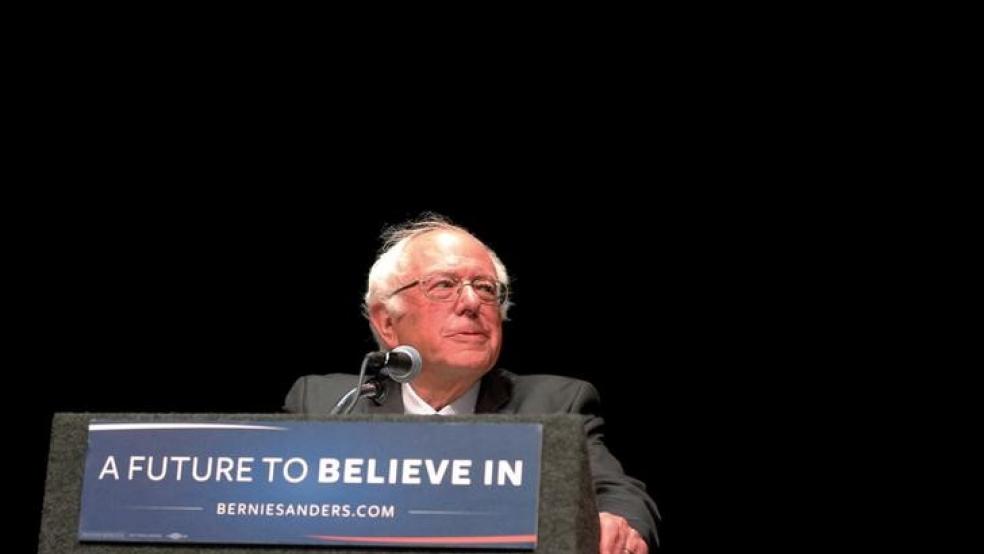Sen. Bernie Sanders has electrified crowds of supporters with his attacks on the elite “billionaire class” and his litany of promises ranging from free college tuition to replacing Obamacare with a price single-payer “Medicare for all” program.
As Sanders has surged ahead of former Secretary of State Hillary Rodham Clinton in the polls in the early battleground states of Iowa and New Hampshire and is closing in on her in the national polls, the news media is beginning to pay closer attention to the specifics of his proposals that are tantamount to some of the biggest domestic spending and tax increases of modern times.
Related: Sanders' Big Spending Plans Would Reinvent the U.S.
A new analysis by The Wall Street Journal of an array of Sanders’ proposals pegged the total cost at $18 trillion in new spending over the coming decade, with tax increases that could raise $6.5 trillion over the next ten years. According to the Journal, those are sums that “alarm conservatives” and even gives some liberals pause.
While the Journal’s $18 trillion spending figure is eye-popping at first glance, it is less shocking when spread out over a 10-year window and offset with proposed tax increases. As Paul Waldman, a senior writer at The American Prospect, notes in The Washington Post today, “While Sanders does want to spend significant amounts of money, almost all of it is on things we’re already paying for; he just wants to change how we pay for them.”
Far and away the biggest increases in spending would be the estimated $15 trillion for a government-run health care program providing coverage to virtually every American as a right. Sanders has said in the past he would finance the ambitious program with a higher payroll tax paid by employers and a progressive “health care income tax” that would have the biggest impact on people earning more than $600,000 a year.
However, Waldman writes in the Post that the $15 trillion of the overall price tag computed by the Journal is for a single-payer health insurance system that doesn’t necessarily reflect Sanders’ ideas. “Sanders hasn’t actually released any health care plan, so we have no idea what his might cost,” Waldman wrote.
Related: OMG—Could Bernie Sanders Be the Democratic Frontrunner?
Next up in the Journal’s analysis is a major infrastructure stimulus program that Sanders has dubbed the “Rebuild America Act.” It was designed to create 13 million new jobs by spending $1 trillion to improve or rebuild roads, bridges and other transit systems over the next five years. The program was conceived as a way to supplement the existing federal highway trust fund program, with a yearly expenditures of about $148 billion on top of the current $50 billion a year in the highway trust fund.
Sanders would increase Social Security benefits for most Americans and bolster the solvency of the trust fund with $1.2 trillion of increased revenue, according to the Journal. That would be achieved by lifting the cap on taxable income for Social Security above $250,000 a year.
And his proposals for tuition-free public colleges and more favorable terms for refinancing college loans would cost an estimated $750 billion over the coming decade.
Sanders’ approach would eliminate tuition for about seven million undergraduates at four-year public colleges and universities, where costs have risen significantly since the 1970s. The federal government would spend $47 billion annually to eliminate undergraduate tuition and fees, while the states would be obliged to cover the remaining $23 billion under Sanders’ approach.
States that took part in the program would have to meet a number of requirements geared to ensuring educational quality, protecting students and reducing ballooning costs. The legislation would be fully paid for by imposition of a federal “speculation fee” on Wall Street investment houses, hedge fund and other speculators.
Related: Surprised Bernie Sanders Is Leading the Polls? So Is He
Among Sanders’ other proposals:
- $319 billion to provide workers with paid family and medical leave.
- $29 billion to prevent companies from cutting pension funds.
- $5.5 billion to create one million jobs for disadvantaged youth.
Sanders has said he would finance many of his initiatives by demanding that the wealthy and large corporations “pay their fair share in taxes.” He has vowed as president to prevent multi-national corporations from shifting their profits and jobs overseas to avoid paying U.S. income taxes. He would also create a progressive estate tax on the top 0.3 percent of Americans who inherit more than $3.5 million, and enact a tax on Wall Street speculators “who caused millions of Americans to lose their jobs, homes, and life savings.”
By contrast, Clinton so far has unveiled initiatives and programs to help the middle class and college students and their families estimated to cost $650 billion over the coming decade, according to the Journal.
Larry J. Sabato, a University of Virginia political scientist, says he doubts spotlighting the mushrooming costs of Sanders’ domestic spending proposals will have any appreciable effect on his liberal supporters.
Related: With Rick Perry Out, the Culling of the GOP Herd Begins—Here’s Who’s Next
“They’ll simply say, soak the rich and get the $18 trillion,” Sabato said in an email message on Tuesday. “But Clinton can use this with donors, who are all in the class that would be soaked. And she can use it with pragmatic Democratic leaders who believe Sanders is not electable in November.”





